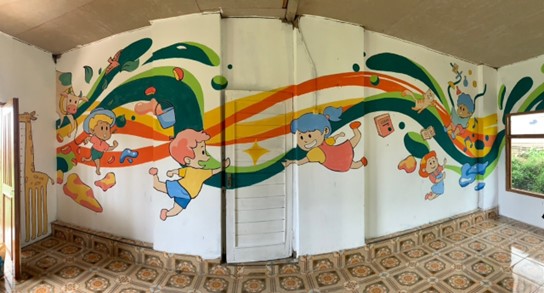Take a Look at the Current State of Tran-Sumatera Toll Road Construction – Civil Engineering ITB General Lecture
By Adi Permana
Editor Adi Permana

Institut Teknologi Bandung Civil Engineering Study Program held a public lecture, "Hutama Karya Role in the Development of Trans-Sumatra Toll Road", on Wednesday, 24 November 2021. The lecture was held virtually and presented by Ir. Koentjoro as the main speaker.
In beginning his speech, Koentjoro presented the legal statement of PT Hutama Karya operation in the construction of this toll road which will connect all provinces in Sumatra. These legal statements are UU. No 38 Year 2005 concerning Jalan Tol, Executive Order No. 117 Year 2015, and Executive Order No. 100 Year 2014 concerning the Acceleration of Toll Road Development in Sumatra.
According to him, this construction project is difficult because it requires massive funds and investment, which is hard to get for Indonesia. The toll road spans a distance of 2813km and requires an approximated fund of Rp. 539 trillion. Ir. Koentjoro, who is the Director of Operation III of PT Hutama Karya, said that currently there is a 531km section of the toll road that is already up and running.
In his presentation, Koentjoro explained that there are some alternative options in funding this massive infrastructural project. These alternatives are foreign loans, local government bonds, company obligations, and bank loans. The funding of this project also came from some corporations, not only limited to the government.
The challenges that were faced by PT Hutama Karya and its team in constructing the Trans-Sumatra toll road are divided into financial and technical aspects. "Financially, the Trans-Sumatra Toll Road is unattractive," said Koentjoro. The Average Daily Traffic (ADT) in Sumatra is still below business feasibility. He then continued that the Bakauheni area was planned to have an ADT of 20.295, but when it was first operational in 2019 its ADT only reached 11.083. "We did not expect this", he said.
Technical challenges that were often faced is the geological condition of Sumatera which is mainly composed of peat soil, clay soil, and soft soil. Koentjoro said that there is a lot of improvisation and innovation of construction technology and method in this toll road project. In addition, there are land acquisition problems and this unexpected Covid-19 pandemic.
However, Ir. Koentjoro is still optimistic about the development opportunities that this toll road will bring upon Sumatera. Economically the toll road will increase the island's GDP and open new jobs. Currently, some region in Sumatera has developed into industrial, residential, tourism, and mix-use area.
In constructing this toll road, PT Hutama Karya utilized various technological innovations to increase its construction productivity. One of them is the utilization of UAV LiDAR for aerial mapping. Koentjoro also mentioned that the company also installed the weigh-in-motion system which can identify the weight and size of a vehicle that is entering the toll road.
The development of this Trans-Sumatra toll road also takes into account the environmental aspect of the island. Sumatera has very diverse flora and fauna species that are sensitive to its environment. One of the 'environmentally friendly' actions that were taken by PT Hutama Karya in protecting the island environment is constructing the wildlife tunnel crossing for elephants on the Pekanbaru-Dumai section.
Reporter: Hanan Fadhilah Ramadhani (Civil Engineering, 2019)
Translator: Favian Aldilla R (Civil Engineering, 2019)

.jpg)
.jpg)
.jpg)
.jpg)
.jpg)

